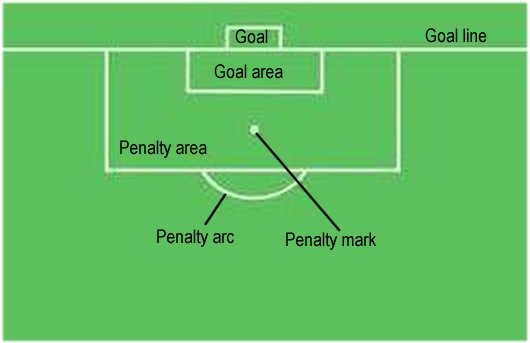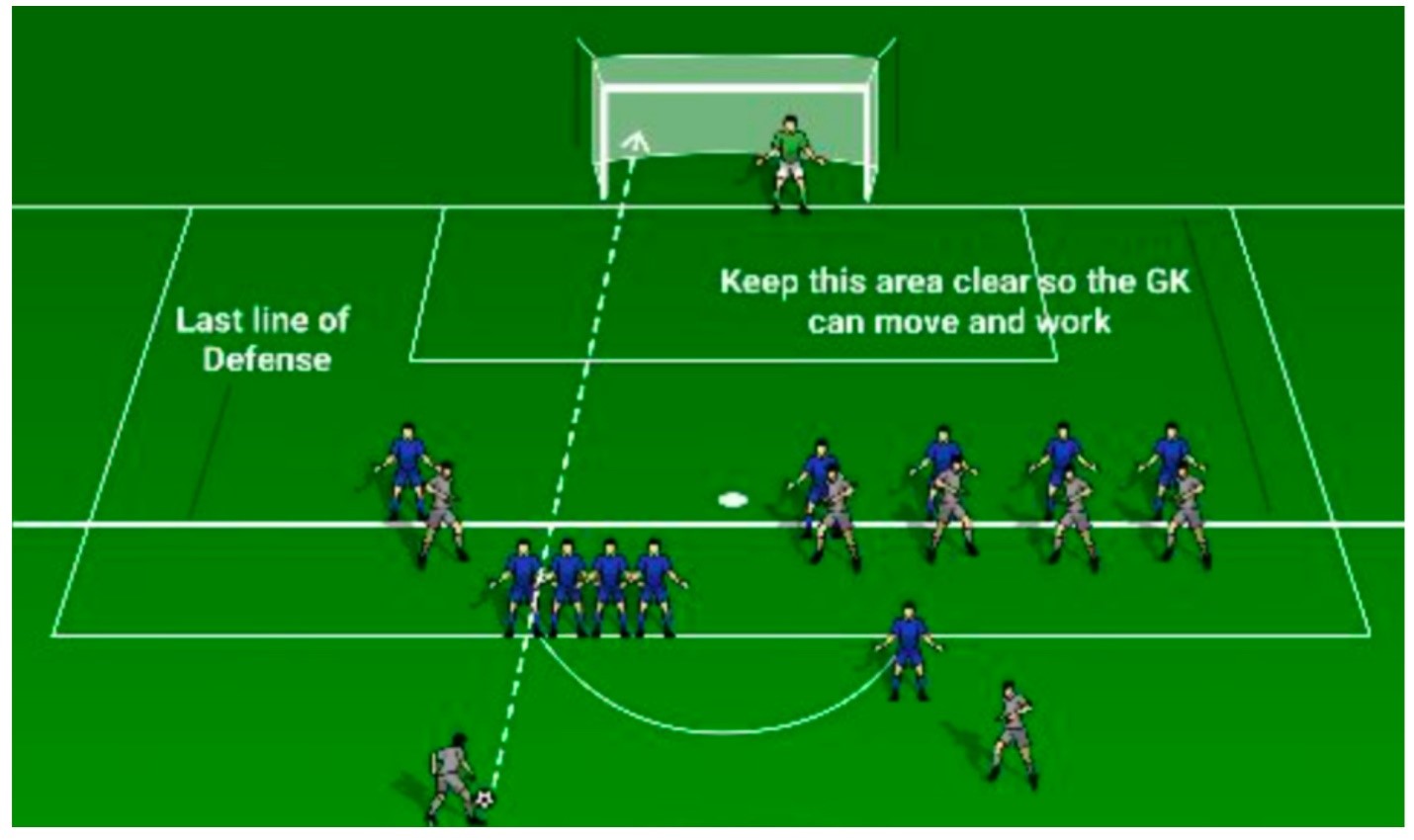One of the most exciting plays in all sports is the penalty kick in soccer. Or “PK” for short. You will see “PK” in stat sheets for soccer matches as a short-term abbreviation for a “Penalty Kick”. The same goes for “OG” which means “Own Goal”.
There’s so much drama and excitement for any penalty kick. That’s because it’s the only time in a soccer match where it’s one on one. Kicker vs Goalkeeper. If the ball goes in, goal. If it’s missed or blocked, no goal. That simple.
A PK is extremely exciting to fans because it’s the only time in soccer where players go one on one. The only other time that happens in any other team sport is baseball, with pitcher versus batter. However, even that requires a third player, the catcher. In a sport of 11 on 11 players, with little chances of scoring goals, a PK is huge. It’s huge because of the one-on-one factor and the likelihood of a goal factor.
At just 12 yards away, a goal seems so easy to the eyes of the fan. But to the players, it seems like a mile away. The goal seems smaller, and the goalkeeper looks bigger. Thousands of eyes looking at you and you only to score a goal. It’s exciting, especially for a home crowd, when that goal goes in. A sigh of relief and excitement from the player, and disappointment and confusion for the goalkeeper. It almost seems unfair for a goalie to have to stop a shot from that close with nobody else to help defend.
However, earning a penalty kick is not always a given, and sometimes comes with a lot of controversy. The rule seems more complicated than what a penalty kick is.
Contents
Penalty Kicks and Rules
What is a penalty kick in soccer? A penalty kick is a single free kick shot on goal while only being defended by the opposing team’s goalkeeper.
A penalty kick is a free kick that is taken from the penalty spot within the penalty area. It is awarded by a referee when a player commits a foul, usually within the penalty box.
Again, this is when soccer comes down to one on one. The player kicking the ball, or “kicker” versus the opposing team’s goalkeeper. That’s it; one shot, one player, versus one player. That’s why it’s so exciting to fans and players. High intensity and high stakes on every penalty kick.
We discussed in another article how flopping in soccer can sometimes earn a penalty kick. For more on that, check out “Why do soccer players flop? The reasons might surprise you”.
Now let’s dive into the details of the PK rules, along with specifics on how or when PK’s are given.
Penalty kick saved by Thomas Hasal! pic.twitter.com/zmYBy7lLF6
— Major League Soccer (@MLS) August 28, 2022
How do you get a penalty kick in soccer?
A referee will decide when and if to award a penalty kick. When a penalty is committed within the penalty area on a player actively kicking, it’s usually an easy call. However, outside of the penalty area, it comes down to a judgement call.
According to Law 14 of the IFAB (International Football Association Board). A penalty kick is awarded if a player commits a direct free kick offense inside their penalty area. Or off the field as part of play as outlined in Law 12.
What that means is if a player commits a penalty to a player who is actively kicking the ball and within the penalty area, a PK will be awarded.
It also means that a PK is awarded outside of penalty area if it falls under Law 12. Law 12 is for fouls and misconduct. This Law has many rules and situations, most of which are judgement calls by referees. If Law 12 is broken, a referee can decide if a PK will be awarded.
Direct Free Kick
A direct free kick is awarded if a player commits any of the following offenses against an opponent in a manner considered by the referee to be careless, reckless or using excessive force:
- charges
- jumps at
- kicks or attempts to kick
- pushes
- strikes or attempts to strike (including head-butt)
- tackles or challenges
- trips or attempts to trip
- Using excessive force is when a player exceeds the necessary use of force and endangers the safety of an opponent and must be sent off
- a handball offence (except for the goalkeeper)
- holds an opponent
- impedes an opponent with contact
- bites or spits at someone on the team lists or a match official
- throws an object at the ball, opponent, or match official, or makes contact with the ball with a held object
What are the penalty kick rules? Can you pass? How does a PK work?
Going back to Law 14 from the IFAB, there are clear rules with the Penalty Kick once it’s been awarded.
- The ball must be stationary on the penalty mark
- The goalposts, crossbar and goal net must not be moving.
- The defending goalkeeper must remain on the goal line, facing the kicker, between the goalposts, without touching the goalposts, crossbar or goal net, until the ball has been kicked.
Basic PK Setup Rules
The players other than the kicker and the goalkeeper must be:
- at least 10 yards from the penalty mark
- behind the penalty mark
- inside the field of play
- outside the penalty area
After all the above bullet points are clear, the referee signals for the PK to be taken.
- The player taking the PK must kick the ball forward. Backheeling is permitted provided the ball moves forward.
- When the ball is kicked, the defending goalkeeper must have at least part of one foot touching, or in line with, the goal line.
- The ball is in play when it is kicked and clearly moves.
- The kicker must not play the ball again until it has touched another player.
- The penalty kick is completed when the ball stops moving, goes out of play or the referee stops play for any offence.
You cannot pass on a penalty kick. Clearly, it’s not possible given that it’s one player and one player only. Only one player is kicking the ball and one player is defending. Therefore, there is no possibility of passing the ball.
A Penalty Kick is simple. One player, the kicker, stands 12 yards away at the Penalty Mark. The Goalkeeper stands at the Goal Line within the Goal Area. No passing. No extra kicks. Just one-shot attempt on goal with one defender trying to block it.
What are the types of penalty kicks in soccer?
When watching a soccer match from home or in person, the 12 yards from the penalty mark to the goal don’t seem far at all. I even think I could make it against a professional keeper. However, that’s not true at all. It’s not easy. In fact, it’s one of the most difficult shots in the sport because of the mounting pressure and little room for error.
So instead of just kicking really hard straight, or right, or left, players have some other shots up their sleeves. These are some of the most well-known PK Style shots:
- The Ezequiel: basically running up and deceptively kicking with your opposite foot.
- The Panenka: kicking it with a soft pop up over the goalie
- The stutter-step: quick fake without touching the ball then kick
- The short run: slow run up to ball then kick
- Low and hard: hard straight low short for goalie to dive to ground
- The side-foot: side of foot kick with curve movement
To get a closer look, here is the famous Ezequiel Style:
The Panenka:
Soccer players put in countless hours of practice on penalty kicks. There’s more than just the physical element of a penalty kick. There’s a huge mental portion as well. Similar to a free throw in basketball or throwing a strike with 3 balls and the bases loaded in baseball.
Players will work on perfecting their penalty shot because every player wants to take advantage of the opportunity should it arise. Some players are known to be excellent penalty kickers while others are not. And when soccer matches head to penalty kicks, after all time has exhausted, you want your best penalty kickers first.
What is the difference between a free kick and penalty kick?
Both free kicks and penalty kicks are methods of restarting play in soccer. Both are awarded after some sort of rules infringement or opposing the laws of the game.
A free kick is much more subtle than a penalty kick but still one of the most exciting part of the game. As discussed, the penalty kick is awarded after a foul or “penalty”. Most of the time it’s from a penalty committed in the penalty area during the opposing teams shot attempt. This is when the kicker and goalkeeper will go head-to-head, one on one.
A Free Kick however is a little different and with less pressure, but still a big deal. A free kick in soccer is an unopposed kick by a player to restart play after an opposing player has committed a foul or penalty.
What that means is a less harsh foul but enough to warrant a quick stop and restart. A Free Kick could come at the result of a yellow card but not within the penalty area. At that point, the team that was the one fouled, gets to place the ball at the exact spot of the foul.
From there, the team can setup a play. Depending on where the spot is, it could be beneficial to the team kicking. Unlike a penalty kick, with a free kick you can use other players from your team. You can pass too instead of taking a shot at the goal. Also, the opposing team can have players defend as well and must stand 10 yards away as well. Normally they stand right in front of the ball to block the kick. Sometimes the best free kicks are passes as they setup another quick pass or shot attempt.
Free Kick Setup example
A free kick is very similar to a foul in basketball that doesn’t result in free throws. The team that was fouled gets the ball and gets to setup a play. The same goes in soccer.
Free kicks are awarded under the same Law 12 mentioned previously but occur outside the penalty area. Mainly, in a manner considered by the referee to be careless, reckless or using excessive force.
The 5 Free Kick Rules
- The ball must be stationary before a player kicks it
- The ball must clearly move once kicked
- The free kick is taken from the location of the foul/penalty
- Opponents must be a minimum of 10 yards away from the ball
- The player taking the kick cannot touch the ball again until another player touches it.
To get an idea of a free kick and how it looks, see this video showing some of the best free kicks. As you can see, each is setup uniquely and clearly are planned and practiced free kick strategies:
What is a penalty kick in soccer conclusion
With how few goal opportunities are in soccer, it’s no wonder why the penalty kick is exciting. It’s sometimes a team’s best chance to score. It’s also a game changer and momentum shifter and weighs heavily on the team that committed the foul. It makes the goalkeeper vulnerable and gives the kicking team hope.
What is a penalty kick in soccer? A penalty kick is a single free kick shot on goal while only being defended by the opposing team’s goalkeeper.
A penalty kick is a free kick that is taken from the penalty spot within the penalty area. It is awarded by a referee when a player commits a foul, usually within the penalty box.
The next time you watch a soccer match, look closely at action within the penalty area and notice how cautious players are to commit a foul there. And if you’re lucky enough to see a penalty kick, watch the play leading up to it and you’ll know why a penalty kick was awarded.
Other Popular Articles:



